#vocabulary builder
Photo

𝐊𝐨𝐫𝐞𝐚𝐧 𝐕𝐨𝐜𝐚𝐛𝐮𝐥𝐚𝐫𝐲: 𝐀𝐭 𝐓𝐡𝐞 𝐇𝐨𝐬𝐩𝐢𝐭𝐚𝐥
병원 (n): hospital
의사 (n): doctor, physician
간호사 (n): nurse
환자 (n): patient, sick person
의료보험 (n): medical insurance
의료비 (n): medical cost, medical bill
입원하다 (v): be hospitalized
퇴원하다 (v): be discharged from the hospital
문병하다 (v): visit a sick person
진찰을 받다: to have a checkup
치료를 받다: to receive (medical) treatment
혈액검사를 하다: to do a blood test
주사를 맞다: to get an injection
❤️
Kindly Visit My Blog Here
Available Products Here
Available Korean Writing Notebook Here
#한국어공부중#한국어 단어#한국어 문법#한국어#vocabulary builder#Korean Vocabulary#Korean Vocabulary List#Hangul#Learn Korean#Study Korean#한국어배우#한국어 배우기#한국어공부해요#한국어공부하기#한국어공부
12 notes
·
View notes
Text
Here We Go Digging for Dinosaur Bones by Susan Lendroth, illustrated by Bob Kolar
Sing and dance along with this story as we search for dinosaur bones, then excavate, clean, and put the bones back together in a museum.

This book is sung to the tune of Here We Go Round The Mulberry Bush, with added paragraphs explaining what the young scientists in the pictures are doing. This book is great for classroom reading!
Here We Go Digging for Dinosaur Bones will help kids practice singing, talking, and playing. It'll build phonological awareness, vocabulary, and background knowledge.
Extend the book with homemade fossils!
Bury a small plastic dinosaur toy in a mixture of cornstarch and water. In a day or two the cornstarch will dry into a fossil that your child will be able to dig up!
You will need:
1 small plastic dinosaur toy
cornstarch
water
a small container
tools for excavating (for example, brushes, hammers, toothpicks)

Instructions:
Mix 1 part water with 2 parts cornstarch to make a thick mixture called oobleck. Let your child mix this with their hands so they can feel the interesting texture. Oobleck is lots of fun to play with so you may want to make extra!
Fill a small containter with the oobleck and drop your dinosaur inside. It should be completely buried.

Leave this to dry completely. Be patient, this could take a couple of days! You can tell it's dry when it starts to crack along the surface.
Once it's dry, gather tools scientists might use to excavate fossils. You can try brushes, hammers, toothpicks, and anything else you think might help you carefully excavate the dinosaur.
Take the hardened fossil out of the plastic container and let your child dig out the dinosaur!
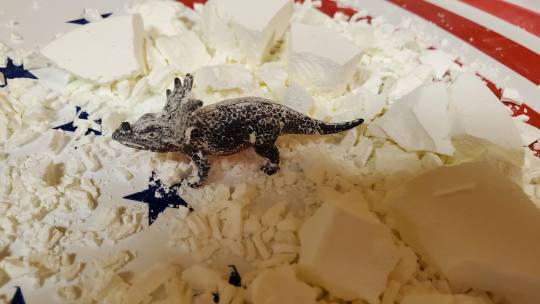
#dinosaur books#preschool activities#kids' books#here we go digging for dinosaur bones#susan lendroth#bob kolar#singing#talking#playing#phonological awareness#vocabulary builder#vocabulary#background knowledge#ecrr extension activities
2 notes
·
View notes
Text
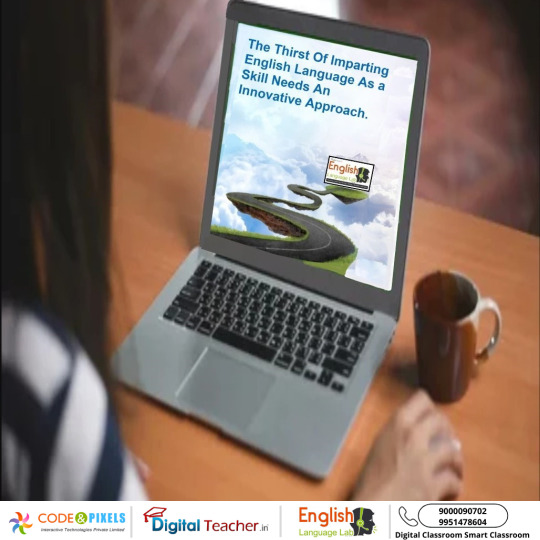
ENGLISH LANGUAGE LAB
The language lab is a very useful tool that facilitates classroom engagement and interaction via computer-based exercises and activities - to maximize language immersion.
These labs provide a very different experience from the traditional system of teaching and learning languages, offering more advanced features and functionalities.
#english#vocabularybuilder#grammar#spokenenglishsoftware#vocabulary builder#language lab#basics of grammar#digital language lab#digitalteacher#englishlab
4 notes
·
View notes
Photo
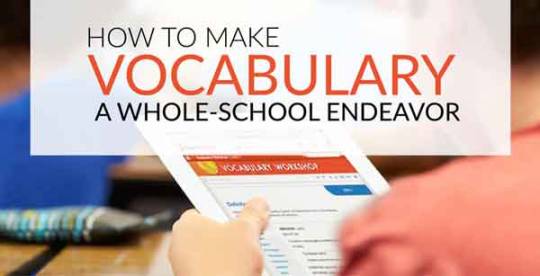
Vocabulary Builder
The main purpose of the Language lab is to give free hands to the student so that without any fear and hesitations students should use the lab and improve their English skills.
3 notes
·
View notes
Text
Digital Language Lab / English Language Lab – Technical Specifications.
Language lab should focus on :a. Fluency: To improve fluency Audio/Visual applications based on stress, intonation and modulation are practiced.b. Speech sounds: Pronunciation of consonants and vowel sounds made easy with correct syllabic division and stress patterns.c. Intonation: Improving the knowledge of English by mastering variations in volume, pitch, speed, and stress.d. 3000+ difficult words to recite for better pronunciation.e. Phonetics: The accent of different words is made easy through phonetics.f. Modulation: Modulation helps to achieve precision in pronunciation.g. Pronunciation, Syllabic division: Almost 3000+ syllabic words are used from Monosyllabic to Hexa syllabic.1. The software should be capable of being installed on desktops, laptops, and in any windows based operating systems
2. Language lab should be developed as per CEFR refereed standards i.e. syllabus should be divided as per A1, A2, B1, B2, C1, C2 standards
3. The content should focus on building all four language skills namely, LSRW.
4. The content should have activities, exercises, and should be loaded with audio-video samples.
5. The main purpose of the Language lab is for self-practice for students, hence user interface should be easy to navigate and does not require any teacher or facilitator to guide or monitor the student in the learning process.
6. There should not be any limitations. Students should be able to go through the module unlimited time till he/she gets proficient in the topic
7. After completion of every Course, an assessment/Quiz should be available for the student to check their knowledge levels
8. Students should be able to record and download the voice unlimitedly
9. Software should not require high configuration machines. Even normal PCs and Laptops should be able to handle the software without any issue.
10. Graphic rich content to be used to explain concepts to students
11. Indian neutral /accent-free voice should be used in the Language lab
12. All levels and backgrounds of students i.e. rural students should also use easily and effectively
13. Should Provide equal weightage on LSRW
14. Basics of grammar must be covered in brief
15. Special activities to overcome Mother Tongue Influence (MTI). A focus on ‘Mother Tongue Influence (MTI) to overcome pronunciation differences of consonant sounds using mouth movements.

Detailed coverage on phonetics :
1. Reading – covers all aspects of grammar in usage
2. Writing – covers all discourses for CBSE and SSC
3. Editing – explores grammatical accuracy
4. Listening – provides exposure to a variety of text
5. Assessments
6. Well-graded content
7. Situational Approach
8. Well-guided practice activities
9. Learner-centered activity
10.Academic vocabulary
. ELL should have 5000+ words (8 levels) with picture representation which helps the students in learning new words.
. Prerecorded Lessons should be made available to students by experts with good quality graphics
. Students should listen to and repeat after model track to practice common everyday situations and conversations& dialogues while their voices are recorded.

Language lab should focus on :
a. Fluency: To improve fluency Audio/Visual applications based on stress, intonation and modulation are practiced.
b. Speech sounds: Pronunciation of consonants and vowel sounds made easy with correct syllabic division and stress patterns.
c. Intonation: Improving the knowledge of English by mastering variations in volume, pitch, speed, and stress.
d. 3000+ difficult words to recite for better pronunciation.
e. Phonetics: The accent of different words is made easy through phonetics.
f. Modulation: Modulation helps to achieve precision in pronunciation.
g. Pronunciation, Syllabic division: Almost 3000+ syllabic words are used from Monosyllabic to Hexa syllabic.
#basics of grammar#digital language lab#English language lab#language lab#phonetics#technical specifications#vocabulary builder
3 notes
·
View notes
Text
Something I keep seeing talked about by this account on insta (@/xiaoguachinese) is the need for passive (vs. active) vocabulary. That is, words that you recognize when you hear/read them, but don't necessarily know them well enough to use them on your own in a conversation/writing. You need a lot more passive words to understand what's being said to you, but may not need as many words to respond with your own ideas. Basically, their point seems to be you can build up vocab at a less-solid level very quickly to help you get interacting with native speakers sooner and more confidently.
It's interesting because I haven't really seen this concept (passive vocab) talked about elsewhere in the language-learning world, but it's the user's claims about the rate at which their students acquire vocab that gives me pause. Her claim is that an intermediate learner (knows ~1000 words) can go to "fluent" in 4-8 months. To do this, you need about 4000 passive vocab words, learning about 100-200 words every week. I don't know. That strikes me as really difficult to be able to do. Are people really able to keep up with that rate of learning and actually remember what they learned when they go so quickly? Her key points for studying were repetition, speed (study each word briefly, not in-depth), audio (focus on listening), and consistency.
I'd be curious to hear if this seems like a pretty normal study plan or what other language learners think! It feels like I could just be moving pretty slowly and need to get my act together and study more efficiently 😅 I'm not sure. In any case, I'd love to hear thoughts anyone might have on vocab acquisition! It's definitely something I struggle with.
#langblr#studyblr#vocabulary#passive vocabulary#language acquisition#second language acquisition#vocab builder
11 notes
·
View notes
Text
word of the day: january 6th 2022
didactic
1. a) designed or intended to teach
b) intended to convey instruction/information alongside serving another purpose (e.g pleasure or entertainment)
2. usually disapproving : (of a person) making moral observations : (of media) intended to teach proper or moral behaviour
#word of the day#didactic#chaotic academia#studyblr#dark academia#academia#academic validation#english language#language arts#vocabulary#vocab builder#australian studyblr#high school#high school studyblr#advanced english
7 notes
·
View notes
Text

Language Study Diary: Day 1 (2022/6/10)
Hi! I'm starting a daily language diary on the off chance that the sense of accountability will keep me in check.
My goals with English and Japanese are basically to continue building vocabulary through vocab books and extensive reading. I’m also starting Thai from scratch, so I’ll be working through a textbook and using other supplementary resources.
Today:
お決まり表現単語帳→reviewed 10 words, studied 10 new words
Ten Nights of Dreams→reread The First Night, read The Third Night
Merriam-Webster Vocabulary Builder→p163/692
#gbstudydiary#study diary#language diary#langblr#tongueblr#語学#studying english#studying japanese#studying thai#勉強記録#タイ語#merriam-webster vocabulary builder#merriam-webster
22 notes
·
View notes
Text
Some important phannie vocabulary and phrases (in alphabetical order):
Words:
Babuse
Bub/Bubby
Capital£ester
Crafties
Craft/Crafting
Dad
Danosaur
Delia Smith
Doot
Emo
Fetus
Glabella
Gloryhole
Glue
Gnu
Hiatus
Lad/Lads
Ladydoor
Lexicon
Lion
Literally
Llama
Maltesers
Melapples
Microwave
Onomatopoeia
Phan
Phandom
Phass
Phivorce
Phol
Phouse
Placenta
Protip
Ribena
Sim/Sims
Slit
Soulmates
Susan
Twink
Twunk
Uma Thurman
Whisk
Whiskers
Yap/Yapping
Yee
2009
2012
2019
2023
Phrases:
All or nothing
Art is important
Breaking the sound barrier
Companions through life
Dip and Pip
Don't cry, craft
Do you know what a genre is?
Editing tips
"Embrace the void and have the courage to exist"
Forever home/Phorever home
Girl in Prague
Heart eyes Howell
Hello, my name is {Dan}
Help me Dad
Hey buddy
Hobbit hair
It hits different
Love eyes Lester
Lying makes you go to hell
Passenger Princess
Phil trash #1
Reasons why Dan's a fail (yay)
Right in the Florida
Soft and neat
Something something night changes
Square hair
The builders
"This guy"
"This is the most fun I've ever had"
Try new things
Twink Death
Twunk Birth
We're here, we're queer, and we're filled with existential fear
"What can I say?"
You in London?
Inserts:
Get the *insert noun* out for the lads
"Here's the thing about *insert noun*"
I'm at the cluuuuub, I need *insert noun*, but in a sexy way
Ph-*insert almost anything*
The *insert noun* fic
*Insert literally anything*-ussy*
You will get through this *insert noun*
Please leave additional words and/or phrases in the tags and I will have them to the list! <3
#dan and phil#daniel howell#phil lester#amazingphil#dan howell#danandphilgames#dnp#danisnotonfire#list
541 notes
·
View notes
Photo

𝐊𝐨𝐫𝐞𝐚𝐧 𝐕𝐨𝐜𝐚𝐛𝐮𝐥𝐚𝐫𝐲: 𝐋𝐢𝐬𝐭 𝐨𝐟 𝐎𝐩𝐩𝐨𝐬𝐢𝐭𝐞𝐬 (𝟒)
1. 가깝다 (to be close) ↔ 멀다 (to be far)
2. 깨끗하다 (to be clean) ↔ 더럽다 (to be dirty)
3. 길다 (to be long) ↔ 짧다 (to be short)
4. 조용하다 (to be quiet) ↔ 시끄럽다 (to be noisy)
5. 높다 (to be high) ↔ 낮다 (to be low)
6. 가볍다 (to be light) ↔ 무겁다 (to be heavy)
7. 넓다 (to be wide) ↔ 좁다 (to be narrow)
8. 밝다 (to be bright) ↔ 어둡다 (to be dark)
9. 달다 (to be sweet) ↔ 쓰다 (to be bitter)
10. 안전하다 (to be safe) ↔ 위험하다 (to be dangerous)
11. 맑다 (맑다) ↔ 흐리다 (to be cloudy)
12. 얇다 (to be thin) ↔ 두껍다 (to be thick)
❤️
Kindly Visit My Blog Here
Available Products Here
Available Korean Writing Notebook Here
#한국어공부중#한국어공부#한국어 공부#한국어#korean vocabulary#korean vocab list#vocabulary builder#learn korean#study korean#korean language#한국어 배우기#한국어 배우#한국어단어#한국어 단어
11 notes
·
View notes
Text
Leap Frog by Jane Clarke
Leap Frog is an interactive book that follows Felix, a small tree frog, as he leaps through the jungle, encountering an assortment of animals along the way.

Felix is frightened by jungle sounds, and the reader is asked, “What's that noise?” Most of the time, Felix learns there was nothing to be frightened of, but when he comes upon the snake, the reader is asked to clap and shout to scare the snake away!
Skills:
Phonological Awareness – Leap Frog features onomatopoeia (a word that imitates a sound). Books with onomatopoeia help build a child's awareness of and skill in phonological awareness (hearing the smaller parts in words).
Print Awareness – The onomatopoeia words are in bold letters, which draws your child's attention to them. It is helpful to also run your finger under these words as you read them to reinforce your child's awareness of them.
Background Knowledge – Besides the names of some jungle animals, there are tidbits of information on tree frogs interjected into the story.
Vocabulary – This book has animal names, onomatopoeia, and words that your child may not hear in everyday speech, such as “slithery”, “nibbling”, and “rustle”.
Print Motivation – Leap Frog is an interactive book, with colorful, engaging illustrations. Have your child chime in on repeated phrases, guess the noise, and clap when asked. Any time your child is involved in the reading of the story it becomes a more enjoyable experience.
Practices:
Reading – The single most important way to help your child get ready to read is to read together. The interactive text and fun, bright, colorful illustrations in Leap Frog help keep your child engaged and encourage a love of reading.
Talking – Have your child chime in whenever you read the repeated phrase, “Don't worry Felix, there's nothing to be scared of.” Also, ask your child to repeat the jungle sounds and discuss what could possibly be making those sounds.
Playing – This book is very interactive. It asks “What's that noise?”, and the reader can guess what is making the sound. It has the reader clap and shout to chase away the snake, as well as count the numbered branches of a tall tree. Involving your child in the reading of a story makes it much more fun, and keeps their interest, so they can learn more early literacy skills!
Extend the Book:
After you read, sing Five Green and Speckled Frogs with the Kidboomers - it's available on Freegal!
You can also make a paper plate red-eyed tree frog like Felix! This craft is inspired by the folks at Fireflies and Mud Pies and their paper plate frog.
Instructions for a Felix frog:
You will need:
A paper plate
Green paint, markers, or crayons
Red or orange construction paper
Black construction paper
Scissors

Color a paper plate green with paint, markers or crayons.
Trace hands on red or orange construction paper & cut out. Glue to back of plate.
For eyes: Draw or trace 2 large red circles and 2 small black circles and cut them out. Glue black to red circles and glue to paper plate.
Draw a wide mouth on black paper, cut out and glue to paper plate.
Draw two dots above mouth for nostrils with crayon or marker.
Cut a long, thin strip of red paper for a tongue. Curl by wrapping around a crayon or marker. Glue one end to mouth.
#Leap Frog#jane clarke#kids' books#phonological awareness#print awareness#background knowledge#vocabulary builder#print motivation#reading#talking#playing#ecrr extension activities
0 notes
Text
English language lab | Digital #LanguageLab - Hyderabad, India

Read More at: https://www.englishlab.co.in/
Find English Language Lab service provider in Hyderabad. English language lab is the software which enhances the skills of a student, teaches English and enhances ability to Listen, Speak, Read and Write.
#English Language Lab Software#digital language lab#language lab#english lab#digital teacher#english language lab#vocabulary builder#digital lab#basics of grammar#spoken english software#spoken english softwrae#EnglishLanguageLab#LanguageLab#EnglishLab#DigitalLanguageLab#EnglishVocabulary#EnglishLanguageLabSoftware#EnglishLanguage#DigitalTeacher#CodeandPixels#EnglishConversation#EnglishLearning#SoftSkills#CommunicationSkills#EnglishSpeaking#EnglishFluency#SpeakingSkills#ListeningSkills#PresentationSkills#GroupDiscussion
6 notes
·
View notes
Photo
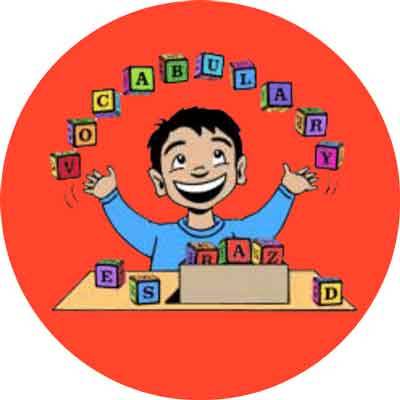
English Language Lab
A teacher who monitored students showed less success than a teacher-less Language lab. Studies proved that when the teacher is monitoring the student closely then the student cannot practice freely. Hence language labs should be explored by students themselves under teacher guidance but not under Teacher Monitoring.
4 notes
·
View notes
Text
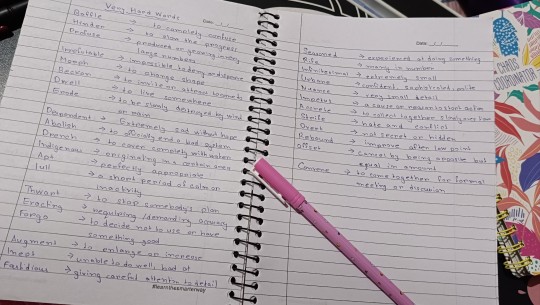
Today I studied very hard words from Magoosh ielts vocabulary builder
#study blog#study motivation#studyspo#study#study aesthetic#studyblr#ieltspreparation#ielts#ieltsexam#english vocabulary#english#vocabulary#study with inspo
30 notes
·
View notes